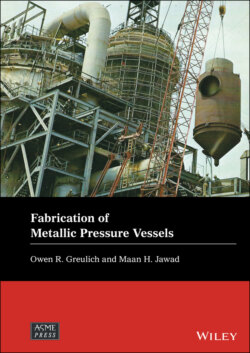Читать книгу Fabrication of Metallic Pressure Vessels - Maan H. Jawad - Страница 11
Оглавление
Preface
Pressure vessels are fabricated in thousands of facilities throughout the world. The fabrication processes differ from company to company, and even from plant to plant for the same company. Even within the same plant, construction of similar vessels will at times be performed in different ways for a variety of reasons.
Some companies produce large quantities of the same or essentially duplicate vessels. They typically develop designs that lend themselves to high production rates, as well as specialized tooling and processes to optimize production of those designs.
Other manufacturers specialize in pressure vessels for a particular function, such as heat exchanger vessels, and design their processes, tooling, and facilities around the type of product produced.
Still other fabricators make a specialty of constructing unique vessels. For these organizations, nearly every product is different from every other, covering a range of sizes, configurations, thicknesses, and purposes. Their business often comes from research organizations or from businesses that use very limited numbers of vessels for special applications, which cannot typically be obtained off the shelf. While using many of the same tools and machines as other manufacturers, fabrication of each vessel is planned as an individual project.
The volume of information that engineers need to absorb to work in the current environment has increased, and at the same time the opportunities for experience in manufacturing environments have in many cases decreased. The authors of this book, recognizing a dearth of readily available information in the field, felt that it would be useful to share their long experience in pressure vessel fabrication with a consolidated reference in this area.
The topics in this book cover various processes required in the fabrication of process equipment. This material will give the reader a broad understanding of the steps required in fabricating pressure vessels and includes such topics as cutting, forming, welding, machining, and testing. Each chapter presents a specific fabrication step and details its characteristics and requirements. Equations, charts, tables, figures, and other aids are presented, where appropriate, to help the reader implement the requirements in actual fabrication. Additional data is presented in the appendices at the end of the book as an aid to the user.
